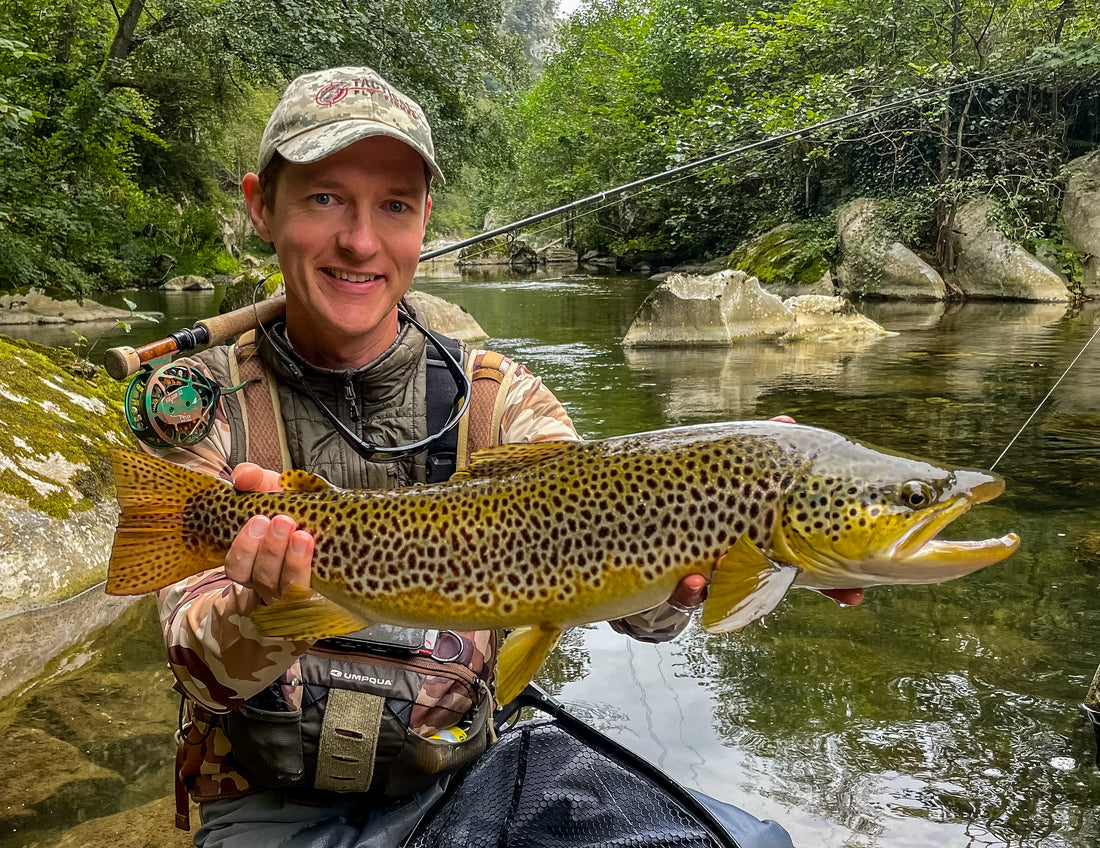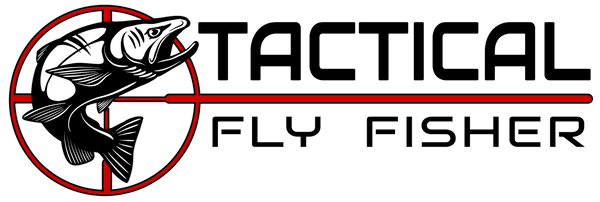
World Fly Fishing Championships 2022 in Asturias Spain: "We talkin about practice?"
Share
I’ve had a lot of folks ask for reviews of my World Championships sessions again this year. I considered not doing the reviews this go around because they take a lot of time and effort and my feelings about the championship are still a bit raw. I suppose I’ll cowboy up and “give the people what they want!”
In mid-September, Fly Fishing Team USA traveled to Asturias, Spain for the World Fly Fishing Championships. We stayed at a bed and breakfast called Casona de Indias near the town of Infiesto on the Pilona River. The owner Pedro and his employee Angie took amazing care of us. The hotel has been renovated beautifully, the beds were comfortable, the view of the Picos Europa was stunning, and we all thoroughly enjoyed our stay. If you ever find yourself traveling in Asturias, I would definitely recommend booking a stay with Pedro.

Casona de Indias. Our hotel during practice.

The gate of our hotel with the Picos Europa in the background.
Our guide for our practice sessions was our friend Pablo Castro Pinos. Pablo has been a part of many medal winning teams for Spain over the years. I have learned a lot from his style of fishing and have incorporated many of his approaches to trout on the river into my own. We felt incredibly lucky to have him as our guide though we knew it was hard for him not being on the Spanish team during a championship in his home country.

Pablo showing us how it is done on the Pilona River our first morning of practice.
Our team consisted of myself, Lance Egan, Cody Burgdorff, Michael Bradley, and Pat Weiss. Our alternate anglers were Jack Arnot and Sean Crocker. Our team captain was Bret Bishop, who is the current Master’s (50 plus) World Fly Fishing Champion after he and Team USA both won gold at the Master’s World Fly Fishing Championship in Italy earlier this summer. Lastly, the man who makes it all possible by supporting the team is our manager, Jerry Arnold.

The Fly Fishing Team USA crew. Pictured from left to right are Cody Burgdorff, Michael Bradley, Bret Bishop, Lance Egan, Pat Weiss, Sean Crocker, myself (Devin Olsen), and Jack Arnot.
The competition was held on four rivers and one lake (though calling it a pond would be a more accurate description.) The rivers were the Caudal, Trubia, Pilona, and Narcea and the lake/pond was Arenero.
We had six days of practice before the championship. The first four days we kept a pretty set schedule of fishing the designated practice water on one of the rivers during the time that the sessions took place from 10 am – 2 pm. Then we would break for lunch and go to look at some of the competition beats for the river we were fishing that day. Then we would drive back to our hotel, have a great meal, and tie flies and prepare gear until late into the evening before doing it all over again the next day.
I always get asked what sorts of things we do as tourists when we are at a world championship. I have to laugh because folks simply do not realize the completely full schedule that has to be kept to have a chance at success at a world championship. When you only have a week to try and learn about rivers that many of the other teams have fished many times previously, you dedicate your full day from dark to dark toward the task at hand.
Unfortunately, practice was not very revealing for our team, or most of the others whom we talked to. The organizers had only set aside very small sections of water (1-2 km in most cases) for the teams to practice on. All 23 teams descended on these short stretches of river and the already tough Asturian brown trout became just about impossible. For example, there were several days where I caught 0-2 trout in the practice. Given the tough fishing, quite a few of the other teams decided to drive over the pass to the south, into Pablo’s home province of Leon, where the brown trout were much happier to take flies. We made the decision to stay in Asturias and stick to the plan. Whether it ended up mattering or not I am not sure, but we felt it was the right decision.
However, practice did show us a few things. Given the drought conditions which Asturias, and most of Europe, experienced over the summer, the rivers were very low. To try and cope with the conditions, the beats on the river were of variable lengths but were exceptionally long on some rivers compared to most world championships. Some beats were over a km long which added up to a long distance of river for each venue over the 23 beats designated for daily fishing session. While long beats are good in theory, they did not really provide much more equity as some beats were inside designated catch and release zones while others were not. The water quality and quantity and density of fish also changed as the rivers progressed over such a long distance. Sadly, there are still a lot of point sources of pollution coming from faulty old septic systems and small farms along the rivers. We witnessed several gray colored putrid smelling effluents during our practice sessions along the urbanized stretches of the rivers we fished.

My first Asturias brown trout from the Pilona River during our first morning of practice.
There were a couple of bright angling spots for me during practice. The first was a fish I caught on the Trubia River the day we practiced there. Sean Crocker and I dropped down to fish a pretty stretch of the river while Pablo took a couple more anglers from our team upriver. On his way upstream, he spotted a very large brown trout from the walking trail above the river. After he dropped the other anglers upriver, he came back down and told me about the fish. We slowly walked around the corner and spotted the giant brown trout sitting in channel between bedrock outcrops at the tail end of a long flat pool. I contemplated how to target the trout for a minute and decided to use a single nymph on my Euro nymphing rod.
I snuck into position using a car sized boulder to hide me from the fish. The first two flies I tried were perdigons with 2.3 mm tungsten beads. After a couple drifts, they appeared too light to generate a response from the trout. I then switched to a 2.8 mm bead simple pheasant tail nymph. The fish swam over and inspected the fly and my heart stopped. I was not sure if it had taken so I set the hook, and nothing happened. Thankfully the fish did not spook. I then switched to a 2.8 mm bead Gasolina Perdigon. I tucked my second cast to drive the nymph down a bit more and the brown swam forward several feet to eat it. The scene reminded me of so many sequences from my trip to New Zealand back in 2018. The trout ended up measuring just under 65 cm (25.6 inches). Luckily Pablo took a video of the entire event that so I can always remember the fish and the sequence in detail.
 Sight nymphing at its finest. Thanks Pablo for spotting this fish for me from the trail.
Sight nymphing at its finest. Thanks Pablo for spotting this fish for me from the trail.
The other bright spot during practice was our final day. We chose to go back to the Caudal River as the weather had finally turned rainy and we wanted to see how the fish would respond. The team all did well that morning and I landed about 10 fish in unlikely holding water in a short period of time. The brown trout were all small and tucked into sloping shallow pockets. Most anglers would probably walk by this water given that it was barely deep enough to cover our wading boots. Pablo wanted me to nymph with long lateral casts to keep two small 2 mm bead perdigons off the bottom in this shallow water. This angle also provided a bit more tension to detect the strikes. The brown trout in Asturias are a unique strain with a slightly sub terminal mouth (tilted down a bit like a grayling or whitefish.) Whether it is this mouth morphology or simply their agility, they were the quickest taking and rejecting brown trout I have come across. They were also exceptionally spooky in the low clear water. Pablo’s lateral tactic worked, and I finally had some confidence in a few fly patterns and an idea for a type of water to look for when I fished my first session on the Caudal River a few days later.

The practice water on the Caudal River.
